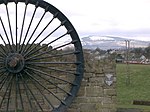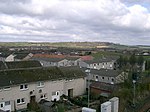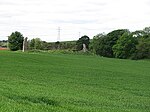Dundonald Bluebell F.C.
1938 establishments in ScotlandAssociation football clubs established in 1938CardendenDundonald Bluebell F.C.East of Scotland Football League teams ... and 4 more
Football clubs in FifeFootball clubs in ScotlandScottish Junior Football Association clubsUse British English from May 2015
Dundonald Bluebell Football Club are a Scottish football club based in Cardenden, Fife. The team plays in the East of Scotland League Premier Division, having moved from the junior leagues in 2018. Their home ground is Moorside Park. Their current manager is former Forfar, Dunfermline Athletic and Hearts midfielder Stephen Husband, who replaced Kevin Fotheringham.
Excerpt from the Wikipedia article Dundonald Bluebell F.C. (License: CC BY-SA 3.0, Authors).Dundonald Bluebell F.C.
Dundonald Park,
Geographical coordinates (GPS) Address External links Nearby Places Show on map
Geographical coordinates (GPS)
| Latitude | Longitude |
|---|---|
| N 56.136275 ° | E -3.262527 ° |
Address
Dundonald Bluebell F.C.
Dundonald Park
KY5 0DL
Scotland, United Kingdom
Open on Google Maps









